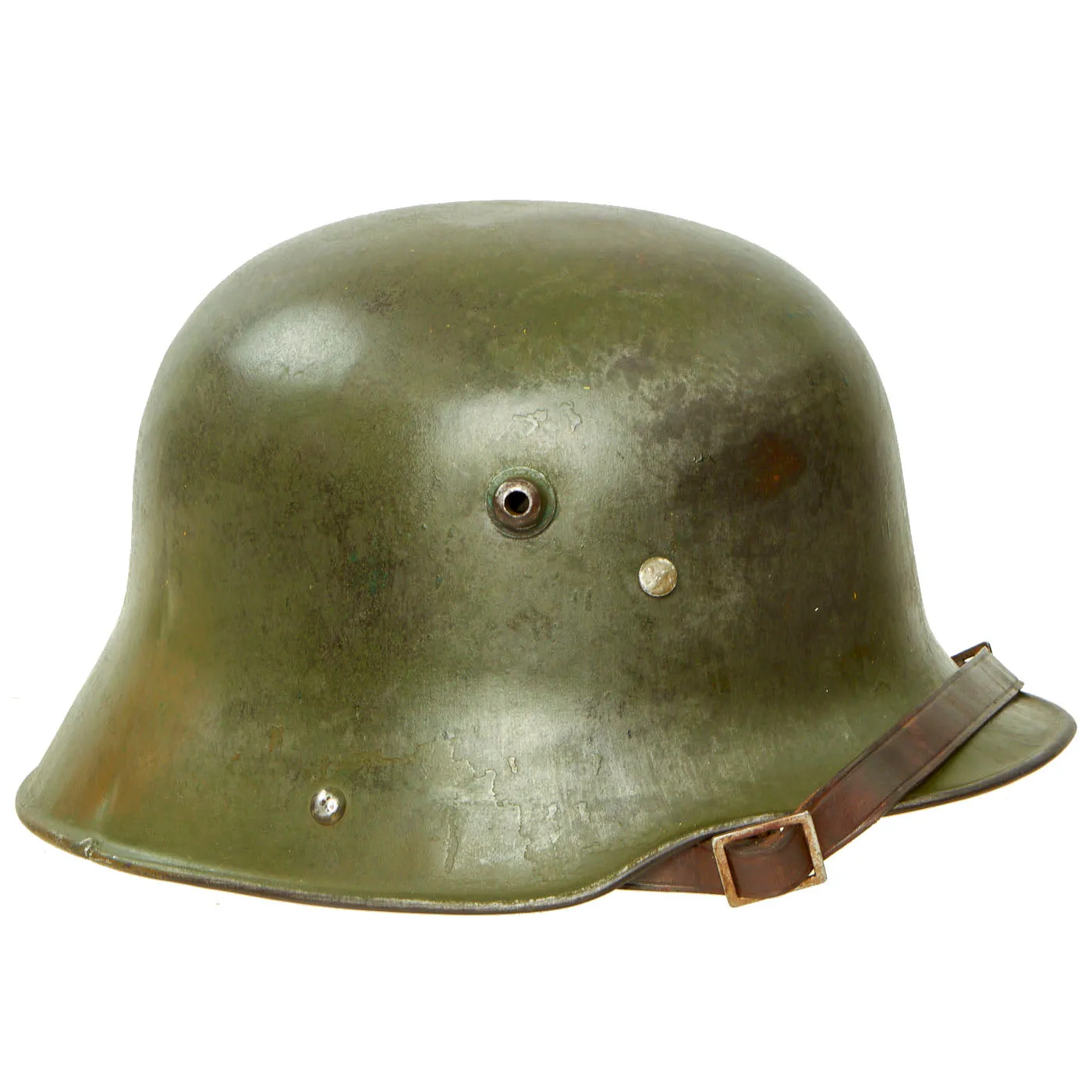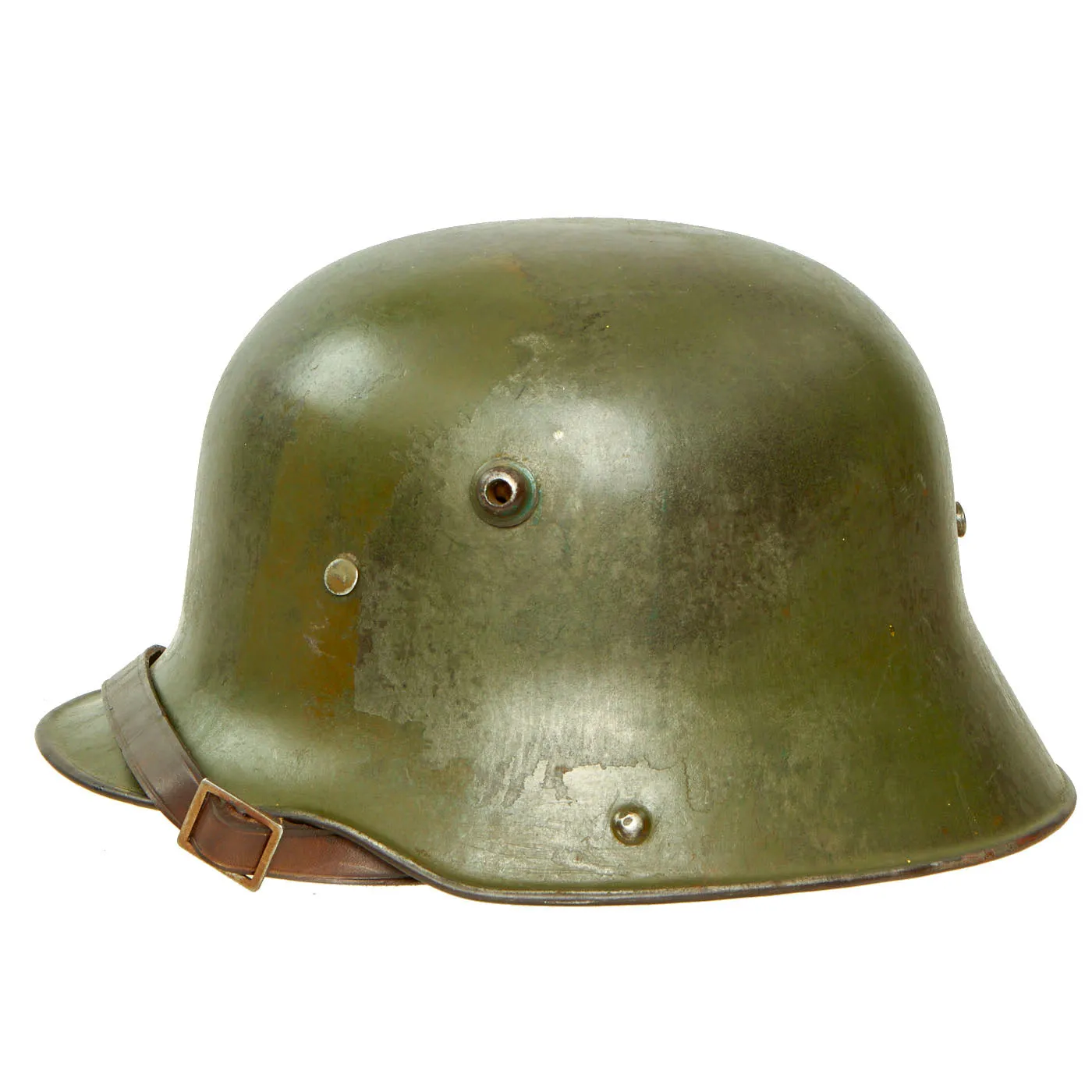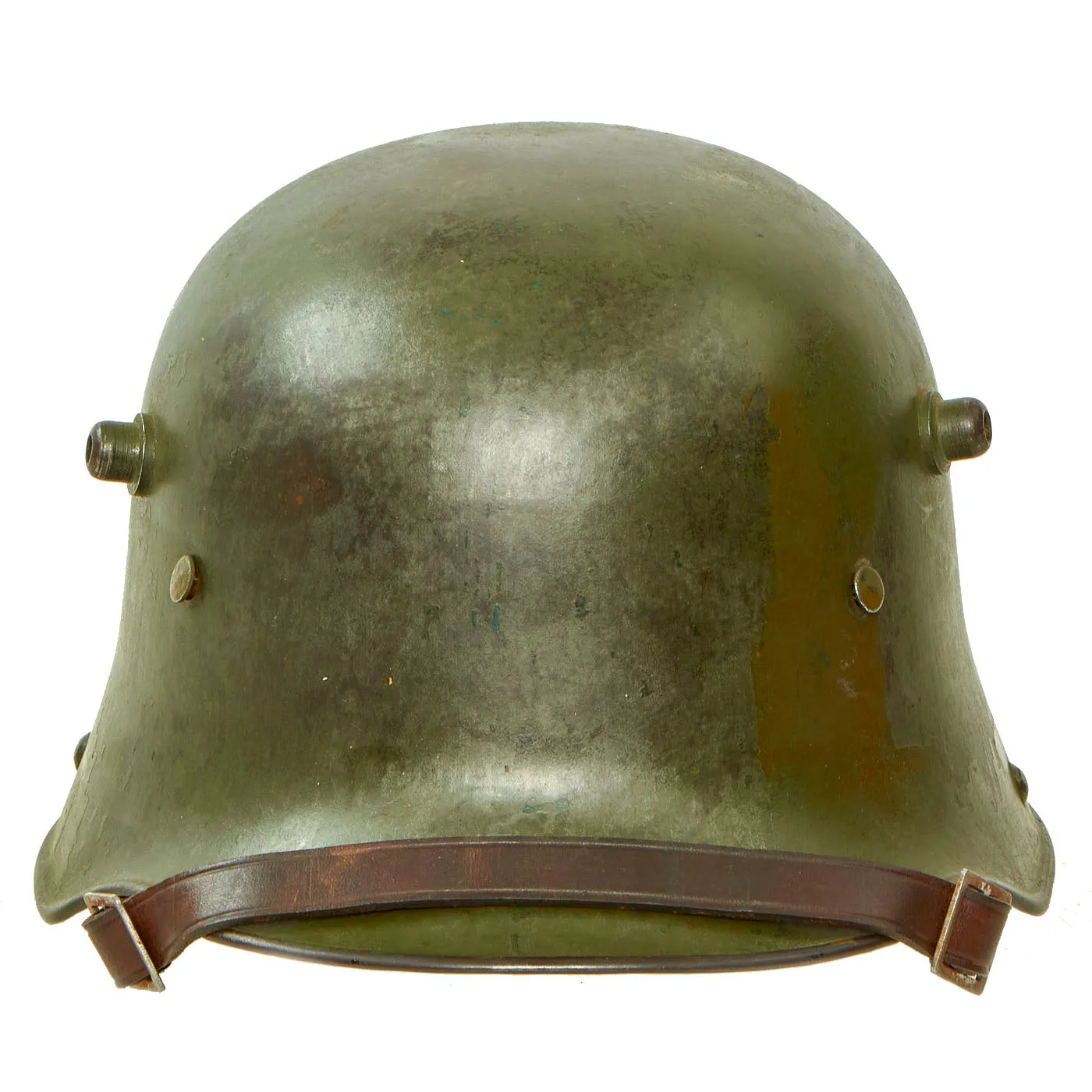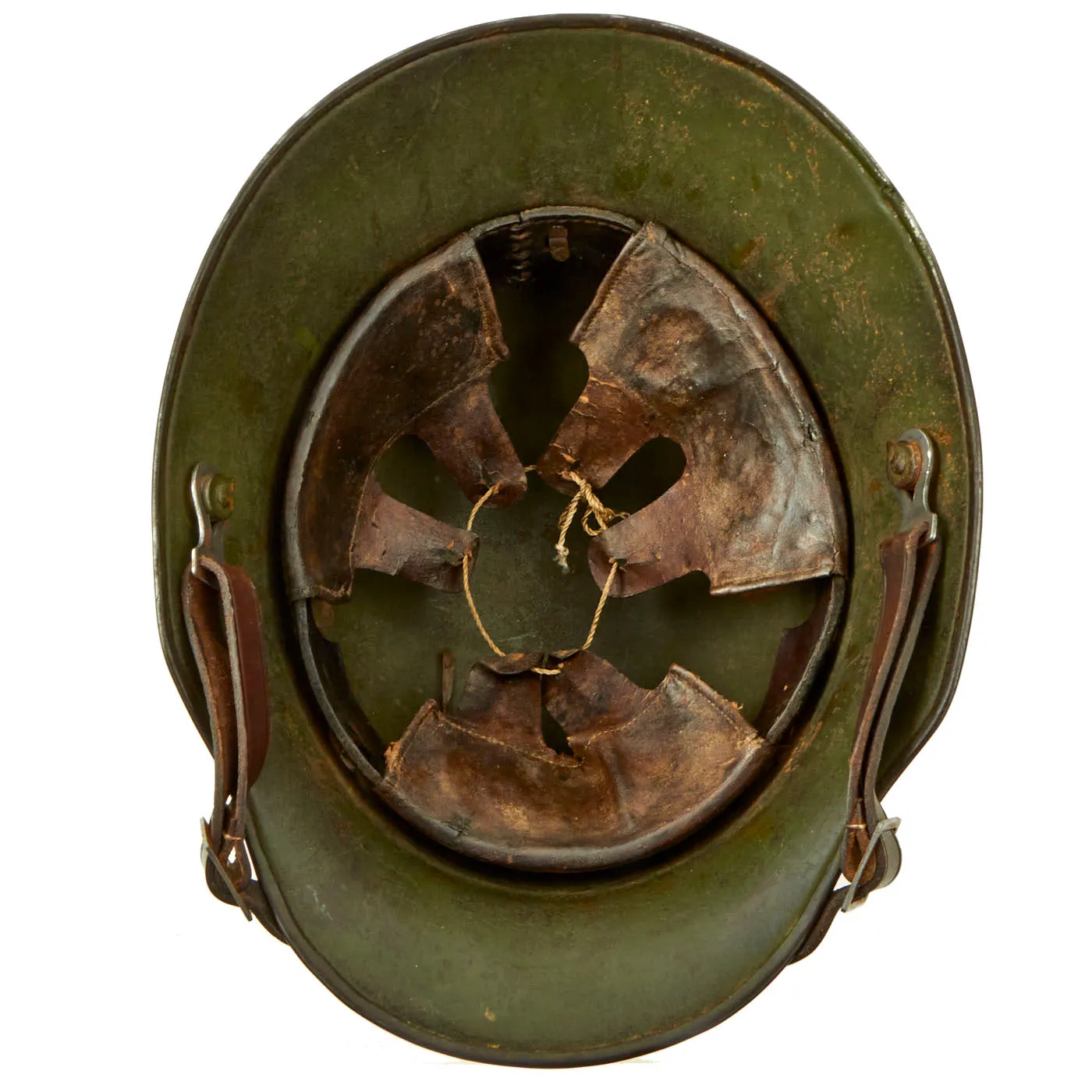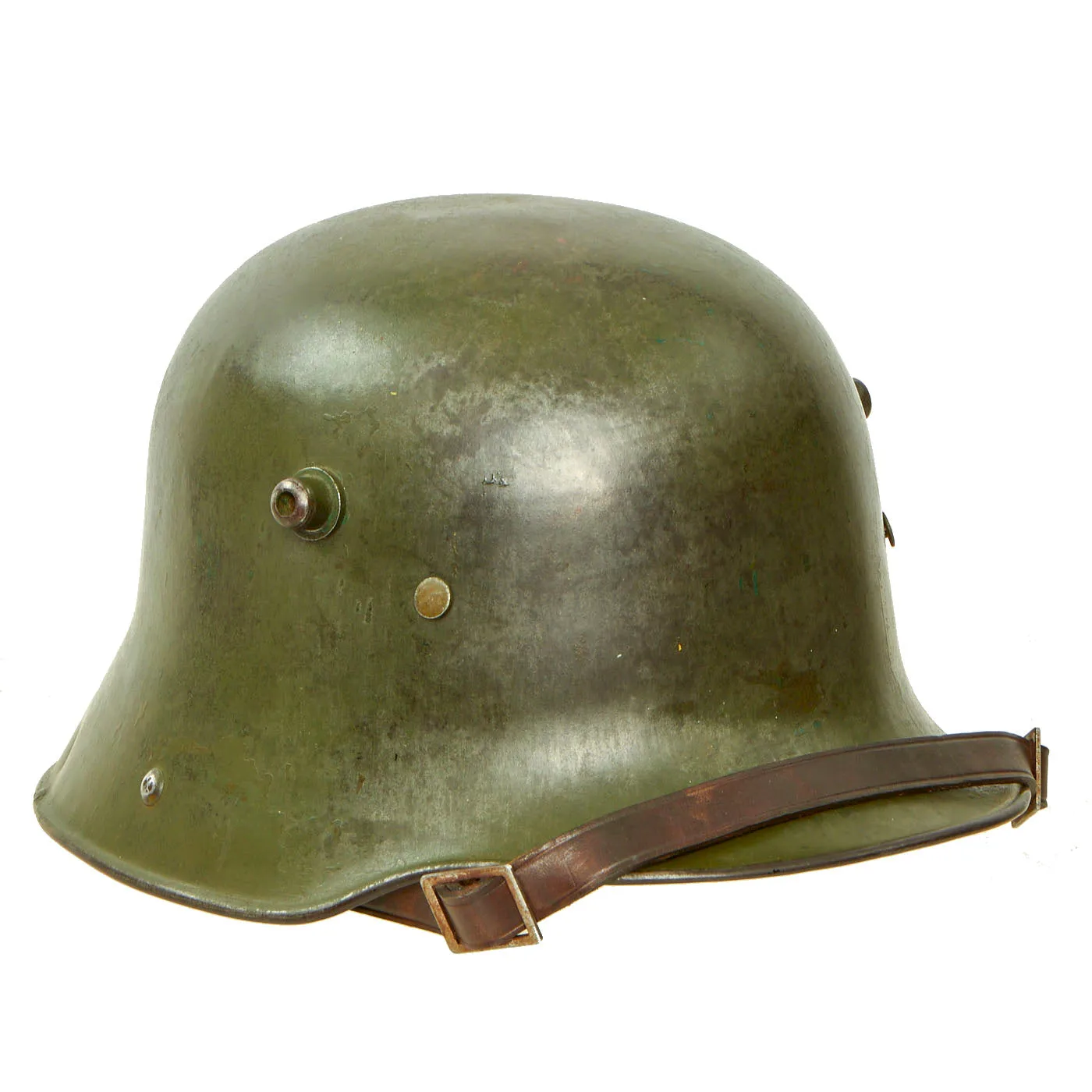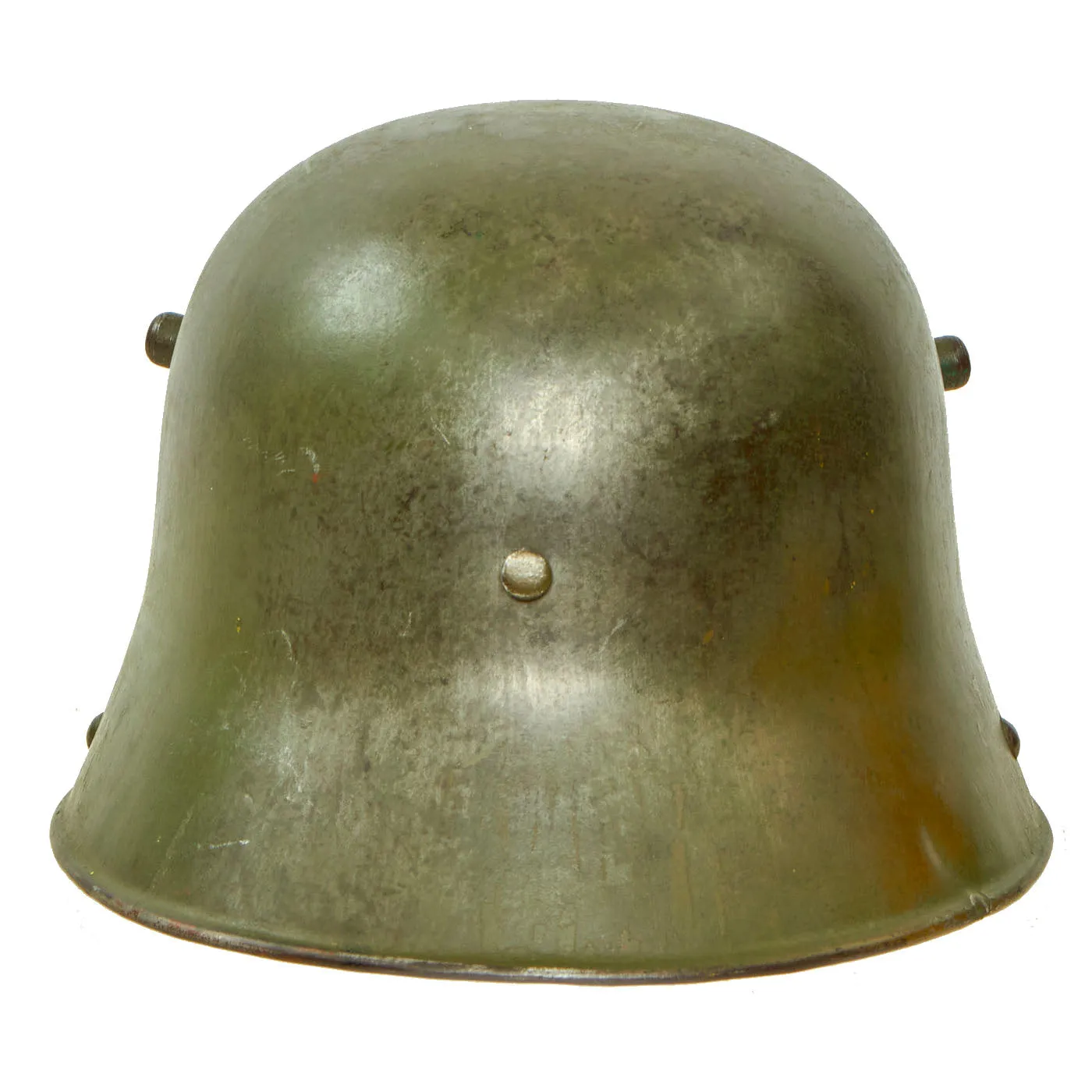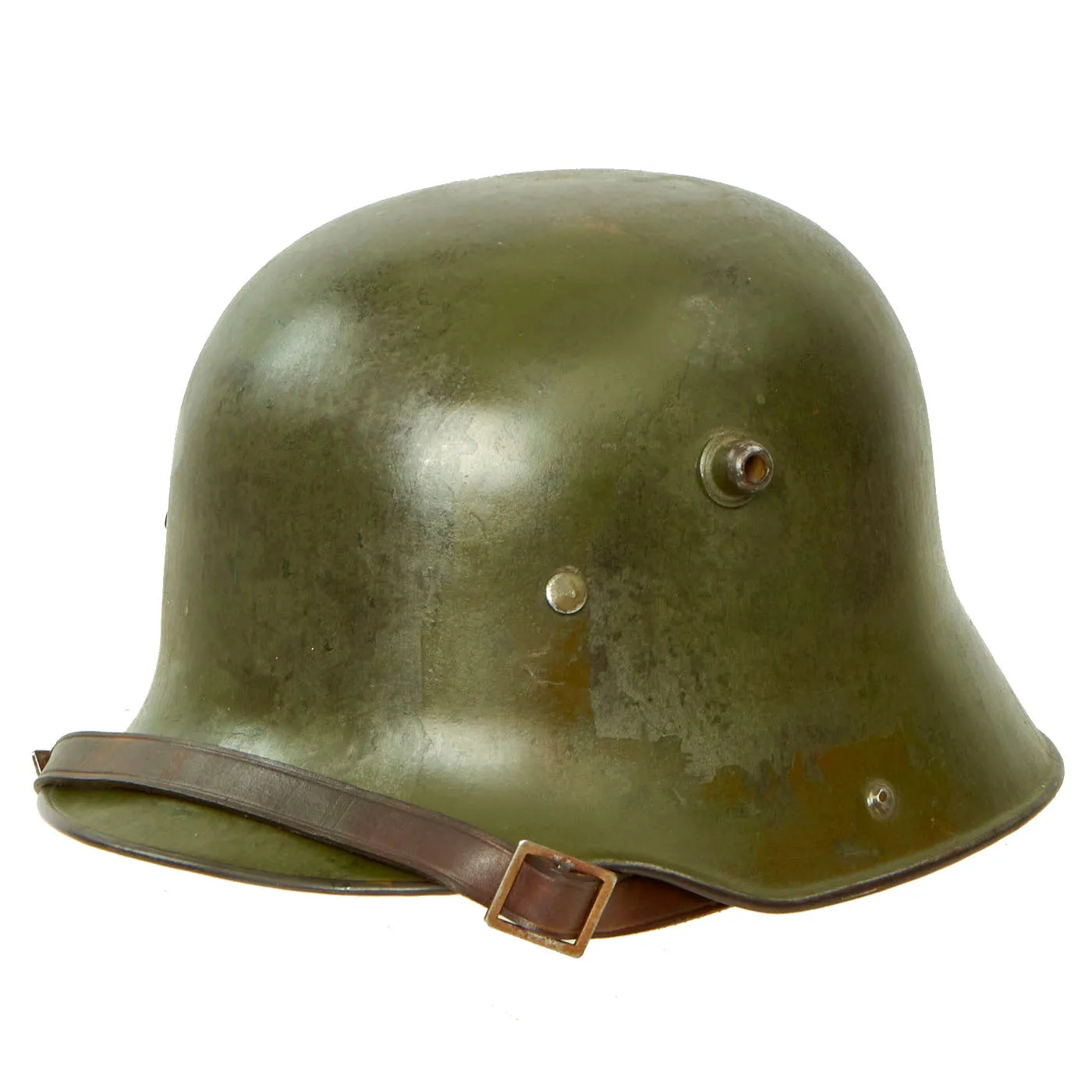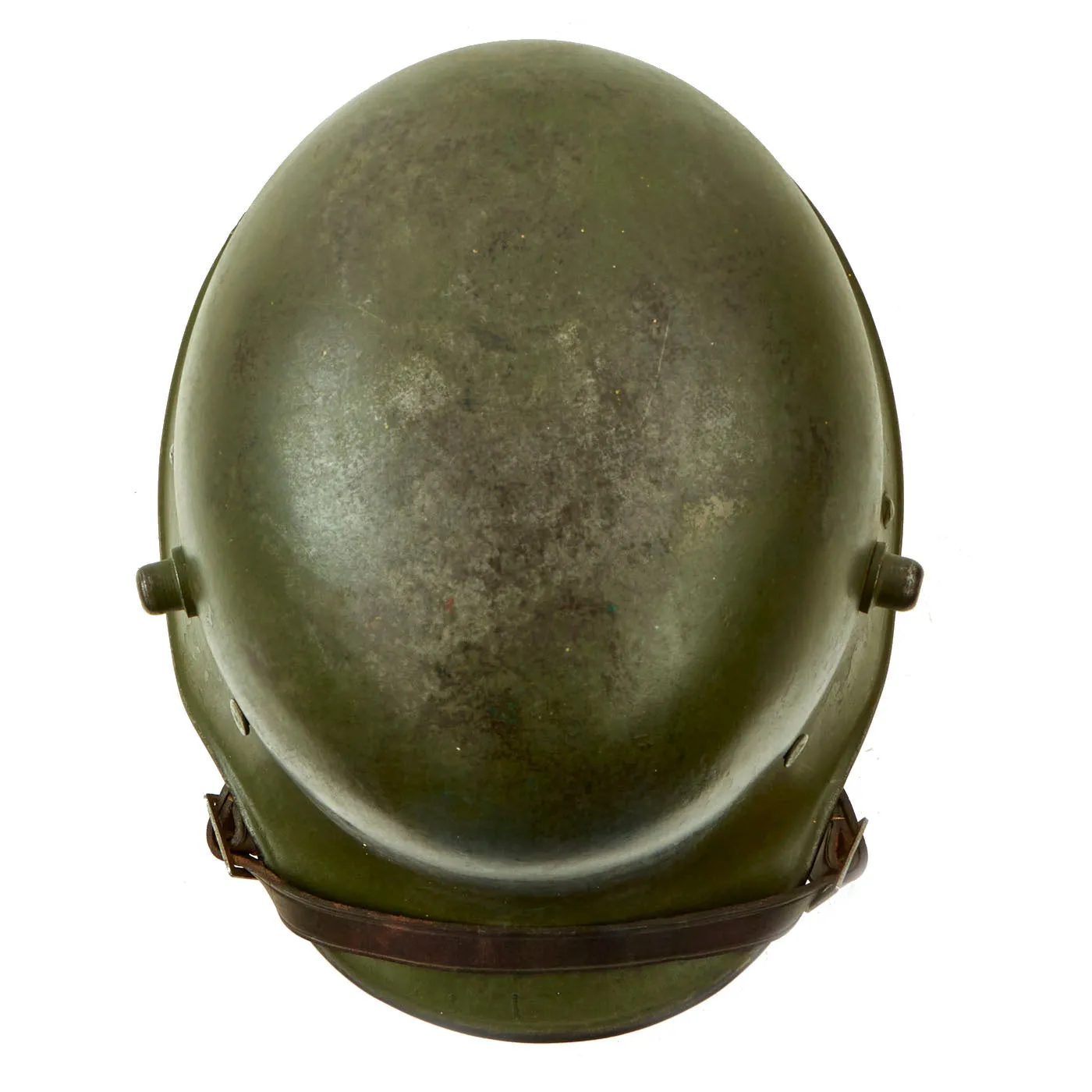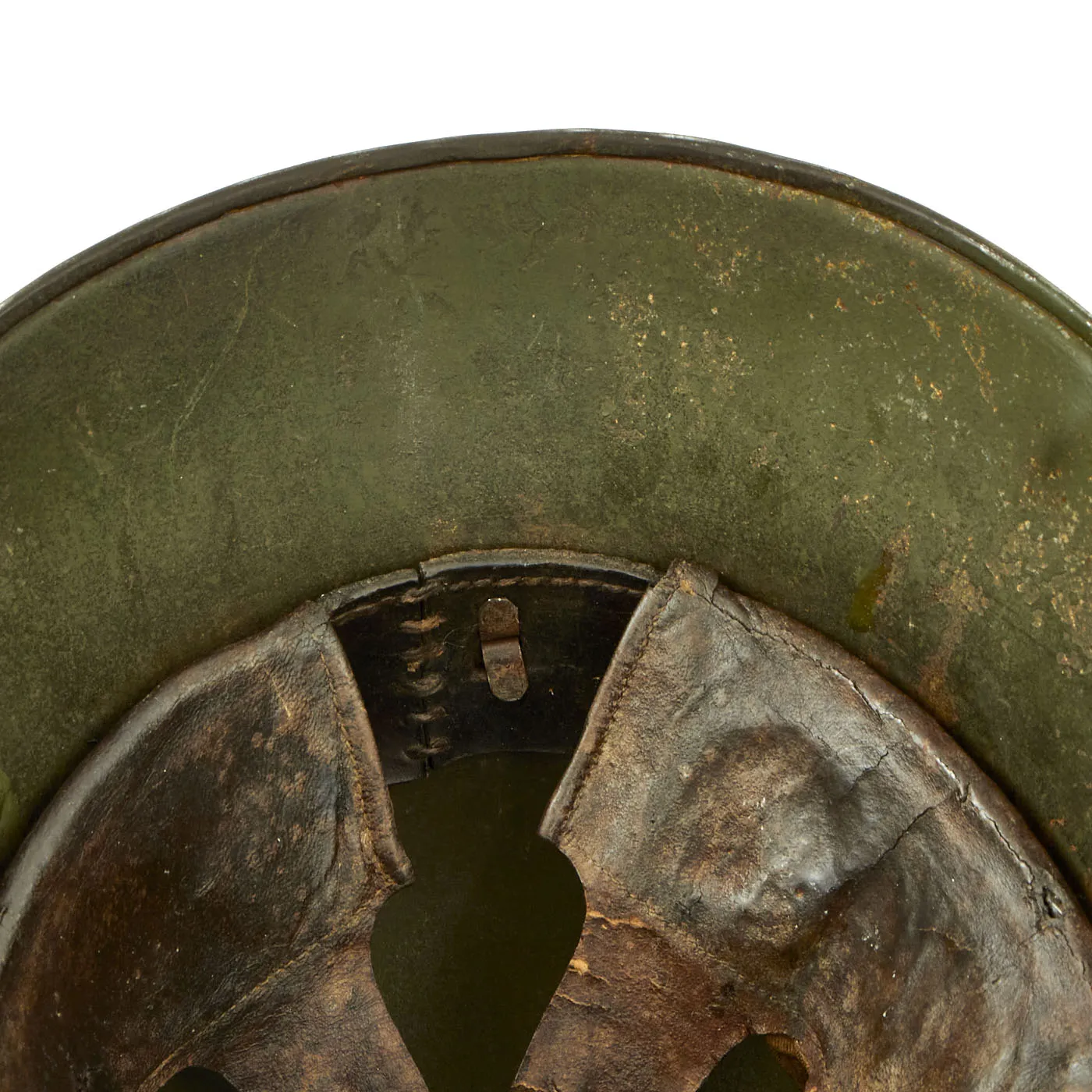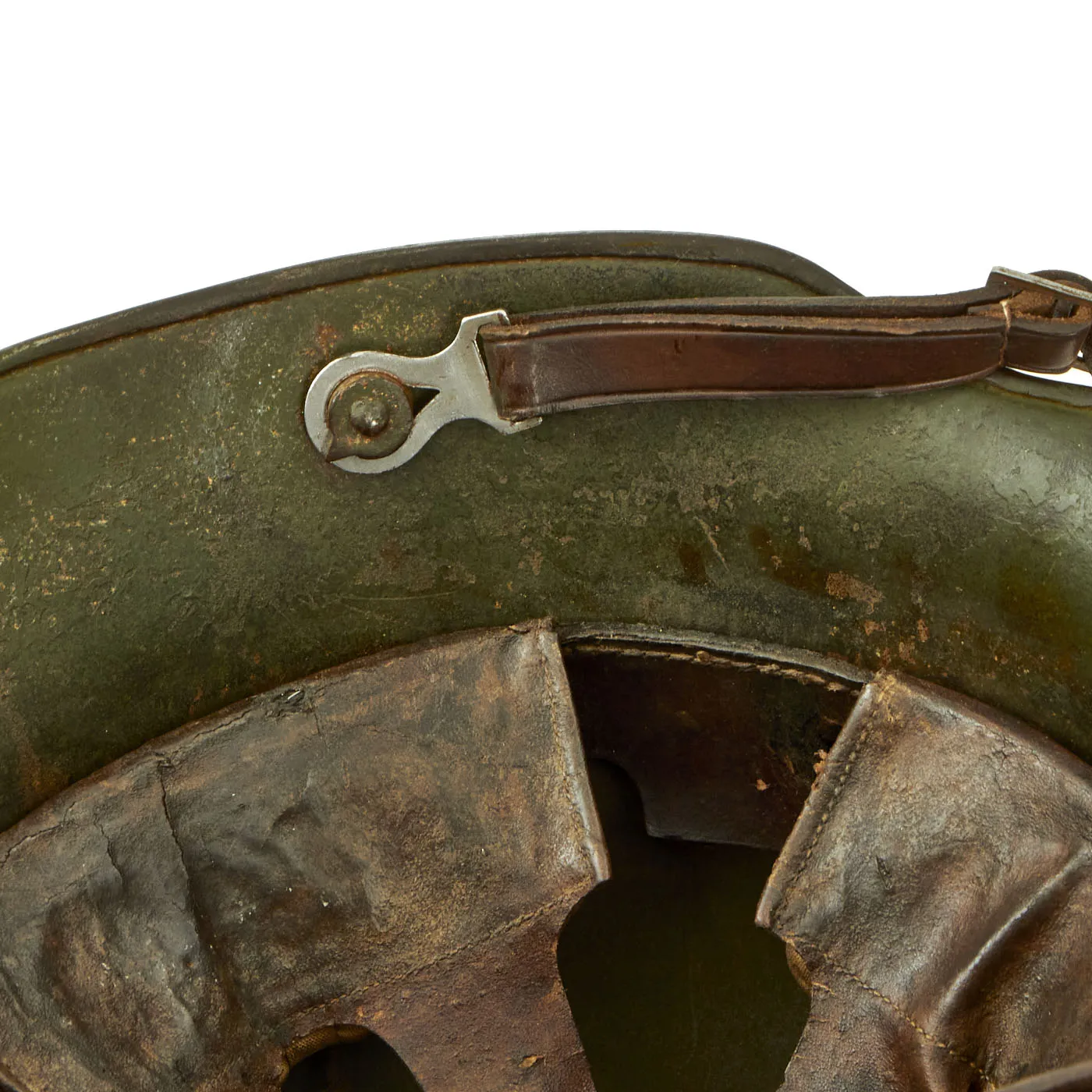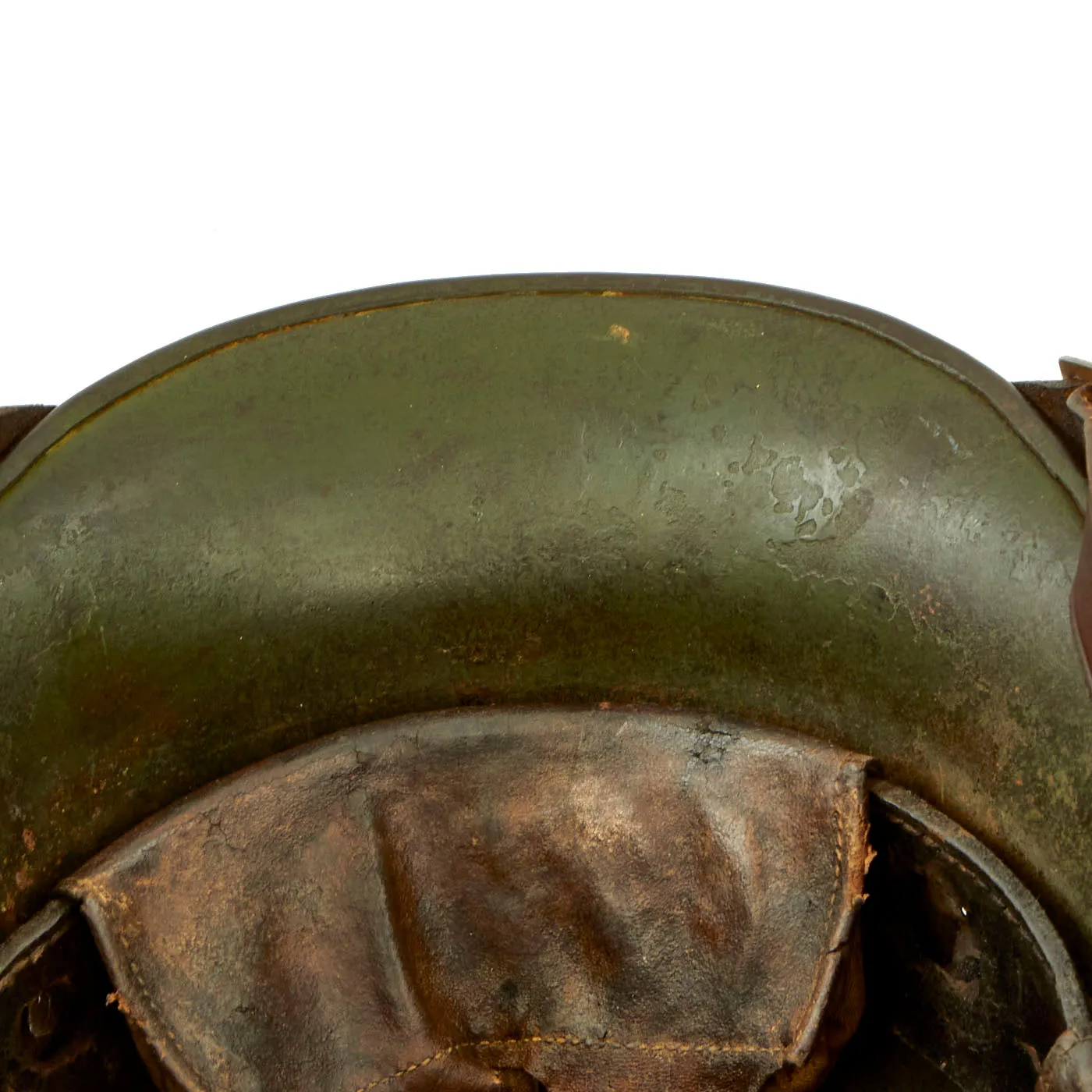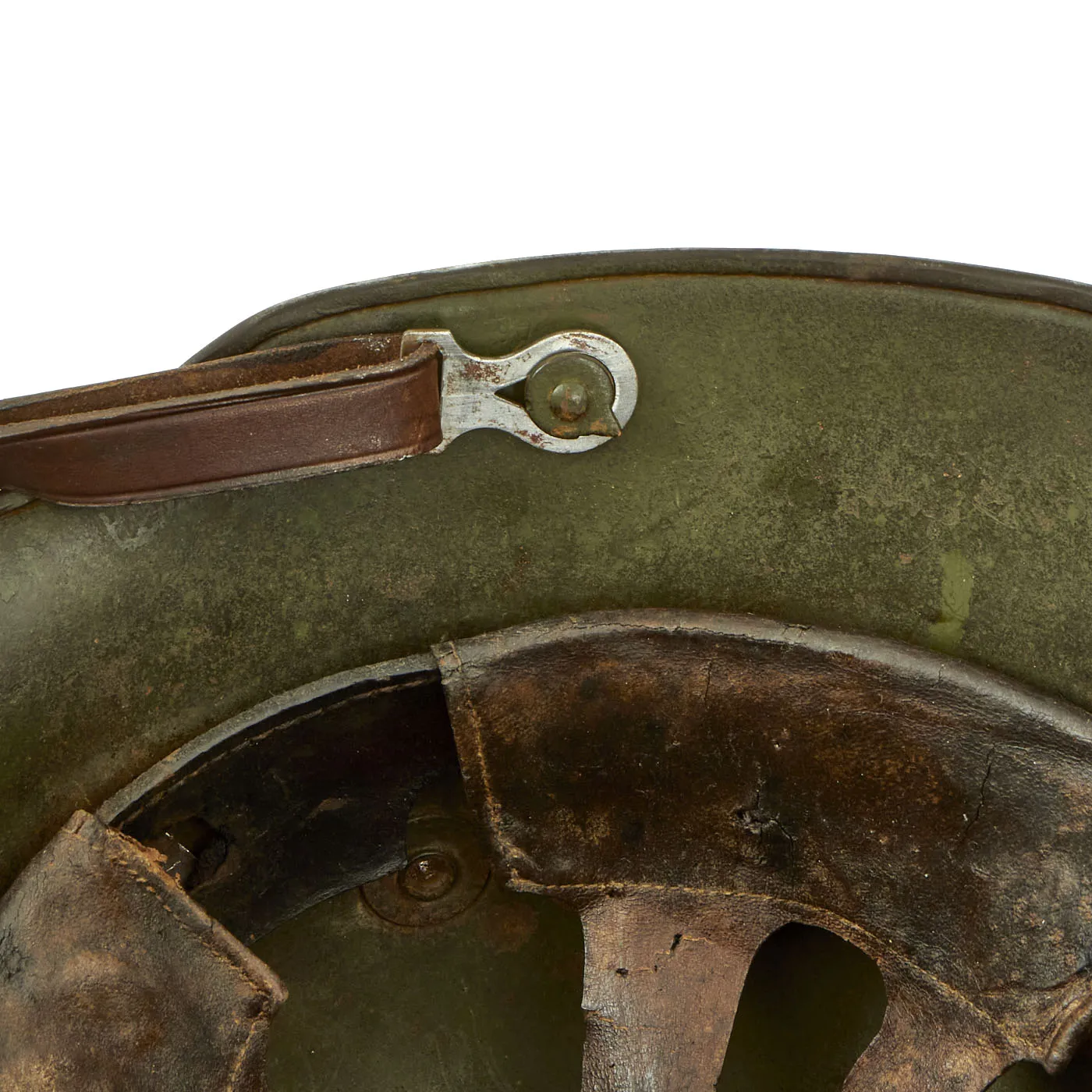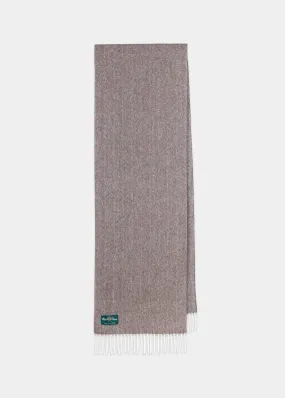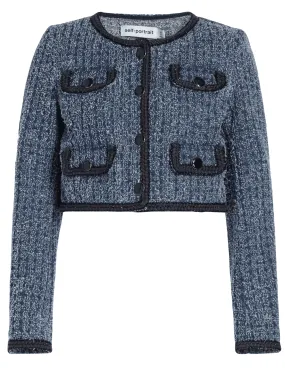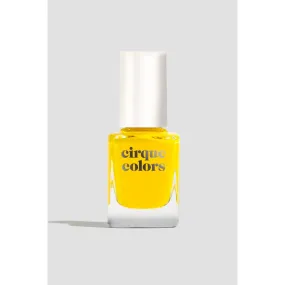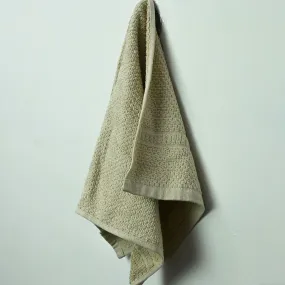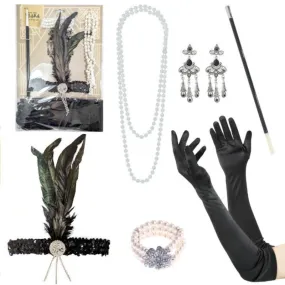Original Item: Only One Available. This is a very good example of a totally original WWI German M16 Helmet, with a very nice green paint scheme. This helmet in particular has faint traces of a “regular” green as used by the Afghan National Army from the 1930s up until the 1970s. The stamped, sheet steel construction, helmet retains about 60% of the original paint, showing a lot of service wear on the crown, which now has light oxidation.
The helmet shell still has both the dome headed chinstrap retaining rivets, which hold the interior pickelhaube style chin strap lugs in place. It also retains both of the extended ventilation side lugs, which are the correct stepped version for size 64 shells. This would ensure proper installation of a Stirnpanzer brow plate regardless of shell size. There is no size stamp visible on the skirt, but with the stepped side lugs, it confirms that this is a larger sized shell. The shell does show signs of having been repainted several times, which is fairly common to encounter in these shells as they had a long service life after WWI. This one appears to have been once used by the Afghan Army, but at one point had the paint stripped back to the base original layer. During my time in Afghanistan, I often encountered these WWI German M16 helmets still in use.
The interior of the helmet still retains the original liner, which while worn, is still mostly intact. It has the early pattern type leather liner band, held in place by original split pins, including the correct thicker rear pin. Two of the three split pins tore through the leather band, making the liner loose and All three leather panels are present, but do show wear, and 2 of 3 still have the original padding behind them. A relatively modern string has been used as a replacement top tie string. The original chin strap is unfortunately completely missing but does have a lovely one present as a replacement.
There is unfortunately rust on the inside crown of the shell, which has made finding any rolling mill marking difficult, but there does appear to be one present.
This wonderful helmet, offered in very nice collectible condition, makes an eye catching addition to any Great War collection. Ready to display!
History of the M16 Stahlhelm Helmet-
The Stahlhelm was introduced into regular service during the Verdun campaign in early 1916.
The M1916 design had side-mounted horn-like ventilator lugs which were intended to be support for an additional steel brow plate or Stirnpanzer, which only ever saw limited use by snipers and trench raiding parties, as it was too heavy for general use.
The shell came in different sizes, from 60 to 68, with some size 70s reported. The suspension, or liner, consisted of a headband with three segmented leather pouches, each holding padding materials, and leather or fabric cords could be adjusted to provide a comfortable fit. The one-piece leather chinstrap was attached to the shell by M1891 chinstrap lugs, the same kind used in the Pickelhaube helmet.
The M1916 design provided excellent protection: Reserve Lieutenant Walter Schulze of 8th Company Reserve Infantry Regiment 76 described his combat introduction to the helmet on the Somme, 29 July 1916:
"... suddenly, with a great clanging thud, I was hit on the forehead and knocked flying onto the floor of the trench... a shrapnel bullet had hit my helmet with great violence, without piercing it, but sufficiently hard to dent it. If I had, as had been usual up until a few days previously, been wearing a cap, then the Regiment would have had one more man killed."
But the helmet was not without its flaws. The ventilator horns often let cold air in during the winter, requiring the wearer to block the vents with mud or fabric. The large, flared skirt tended to make it difficult for soldiers to hear, distorting surrounding sounds and creating an echo when the wearer spoke.
Originally painted Feldgrau (field grey), the Stahlhelm was often camouflaged by troops in the field using mud, foliage, cloth covers, and paint. Official issue cloth covers in white and grey appeared in late 1916 and early 1917. Camouflage paint was not formally introduced until July 1918, when German Army Order II, No 91 366, signed by General Erich Ludendorff on 7 July 1918, outlined official standards for helmet camouflage. The order stipulated that helmets should be painted in several colors, separated by a finger-wide black line. The colors should be relevant to the season, such as using green, brown and ocher in summer.
After the effectiveness of the M1916 design was validated during the 1916 campaigns, incremental improvements were subsequently made.




